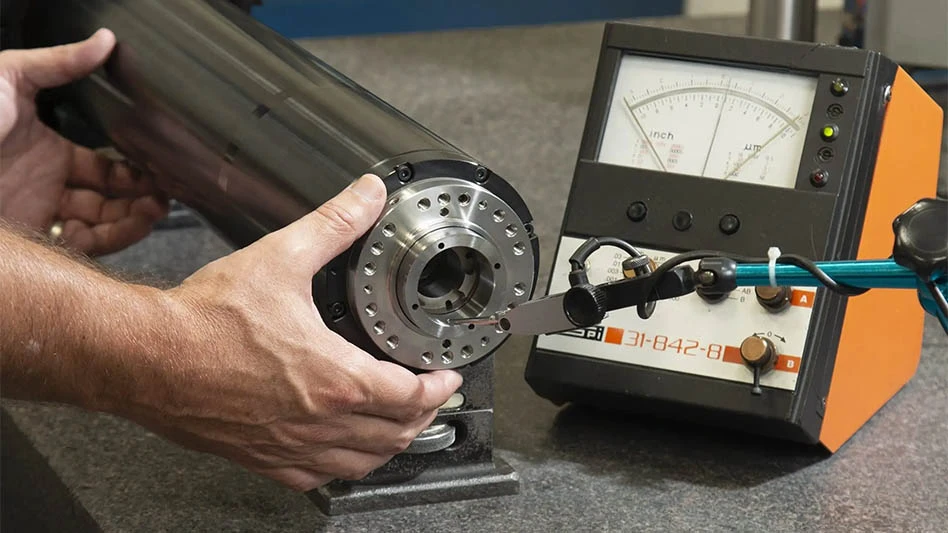
NASA
With the backdrop of a Florida starlit sky, NASA's Artemis I mission, with the Lockheed Martin-built Orion spacecraft on top, majestically launched to the Moon and propelled the world into a new era of human deep space exploration.
This test flight is the first in a series of missions under NASA's Artemis program, which will result in the first woman and first person of color landing on the moon.
Orion lifted off aboard NASA's Space Launch System (SLS) rocket at 1:47a.m. ET Nov. 16 and two hours later the spacecraft separated from the rocket's upper stage traveling at 22,600mph. This put it on a trajectory to break away from the gravity of the Earth and make its way to the moon.
"We're witnessing history as Artemis I brings us one significant step closer to making NASA's vision for human deep space exploration a reality," said Robert Lightfoot, executive vice president of Lockheed Martin Space. "Through a nationwide industry team that has also leveraged an international industrial base, this launch and mission unite the skills of a dedicated workforce and innovative technologies to make a global impact."
With this successful launch, the planned 25.5-day mission has begun. It will initially take several days to reach the moon and fly above its surface. Using the moon's gravitational force, it will propel into a unique distant retrograde orbit that will take it about 40,000 miles beyond the backside of the moon. Orion will orbit the Moon and collect data to allow mission controllers to assess the performance of the spacecraft and its payloads.
Preparing for splashdown
Orion will fly close to the moon and use a precisely timed engine firing in conjunction with the moon's gravity to accelerate back toward Earth – traveling at 25,000mph as it enters the planet's atmosphere. The spacecraft will splash down off the coast of San Diego, California.
"Most people today have not lived in a time when a human-rated deep space spacecraft has gone to the moon or beyond," said Lisa Callahan, vice president and general manager of Commercial Civil Space at Lockheed Martin Space. "With today's launch, that statistic has changed and we're now all members of the Artemis Generation. Personally, I can't wait to see the first woman walk on the moon and the spacecraft that will take her there is already in development."
Industry-first demos and advancements
With a focus on leaning into commercial partnerships and building innovations that will prepare the industry for a future crewed mission, Lockheed Martin has several notables on board for the historic ride:
- Callisto: Lockheed Martin partnered with Amazon and Cisco to develop Callisto, a technology demonstration payload installed inside and interfacing with Orion during the Artemis I mission. Since Artemis I is uncrewed, Callisto was designed to test and demonstrate how commercial technology could be used to support future crewed missions in space. During the mission, controllers will operate the payload from the Johnson Space Center.
- LunIR CubeSat: One of 10 small satellites riding along with Artemis I, the Lockheed Martin-funded LunIR is a technology demonstration which will take images of the moon to test the company's ultra-compact, novel infrared sensor that maps the moon in both day and night. The team will apply learnings from this LunIR endeavor to future lunar and planetary scouting missions to support lower cost, applicable small satellites and technology demonstrations.
- AstroRad Vest: The Artemis I mission will also test AstroRad, a radiation-shielding vest developed by StemRad, a partnership between Lockheed Martin and the Israel Space Agency. The vest is made for space travel and is modeled after anti-radiation vests used by first responders on Earth. The MARE experiment put two torsos aboard the spacecraft – one wearing an AstroRad vest and one without to help determine exactly how much protection it will offer astronauts.
Explore Orion app
Join the Artemis and Orion journeys by downloading the Explore Orion app to your mobile device.
In addition to all things Orion, the app features a special section for Callisto - a unique, vehicle-connected crew interface technology demonstration, which includes Amazon's Alexa voice-activated virtual assistant and Webex by Cisco, a video communication and collaboration software tool.
Callisto is flying on the Artemis I mission to demonstrate how voice technology, AI, and portable tablet-based video conferencing can help improve efficiency and situational awareness for those on board the spacecraft, providing access to real-time mission information and a virtual connection to people and information back on Earth.
With Explore Orion, users can submit comments to Callisto as it travels around the moon. Comments will be displayed on Callisto's screen throughout the Artemis I mission, and replays will be made public so you can see your comment in space.
Latest from Aerospace Manufacturing and Design
- AviLease orders up to 30 Boeing 737 MAX jets
- 256-piece general maintenance tool kit
- JetZero all-wing airplane demonstrator achieves milestones
- Cermet indexable inserts for medium turning operations
- Trelleborg acquires Aero-Plastics
- Industrial automation products, enclosed encoders
- #61 - Manufacturing Matters: CMMC roll out: When do I need to comply?
- AIX shows aircraft interiors are a strategic priority for global airlines





